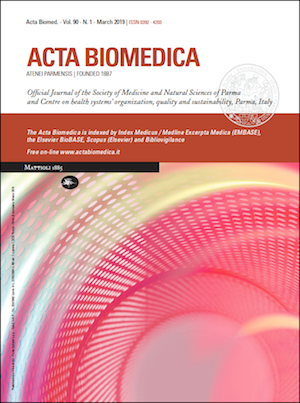European university students of pharmacy: survey on the use of pharmaceutical drugs
Keywords:
self-administration; young people; drugs; leaflet; lifestylesAbstract
Background and aim: In recent years, self-medication is an increasing public health issue, also among the European young people. Only 48% of people throughout the world use prescribed medications, while the remainder admits that they self-medicate with over the counter drugs or leftover prescribed drugs. Also, the risk of antibiotic resistance, throughout the world, has doubled, due to the recourse to these drugs when they are not called for, or to failure to follow their instructions for use. Methods: A five-part questionnaire, translated into the national languages and validated, was given to Pharmacy students in Italy, Spain, the Czech Republic and Romania obtain anonymous information about their pharmaceutical drugs use. Results: Regarding the use of pharmaceutical drugs, students in Spain and Romania indicated the highest percentages of use. In Italy and Romania, the pharmacist is rarely consulted, while the advice of family members or friends is more frequently requested. In all four countries the problem of taking antibiotics without a medical prescription is significant, and 50% of Romanian students use antibiotics to treat the flu. Another important result is that, in Spain, 38.4% of the respondents admitted to using medicines with alcohol. Conclusions: Considering that the drug information leaflet is not read by 50% of young people interviewed, it would be important for public health entities to instruct the population, especially younger age groups such as secondary school students, about the importance of reading this information carefully. The use of mass media in such a preventive medicine campaign could be effective.
Downloads
Published
Issue
Section
License
This is an Open Access article distributed under the terms of the Creative Commons Attribution License (https://creativecommons.org/licenses/by-nc/4.0) which permits unrestricted use, distribution, and reproduction in any medium, provided the original work is properly cited.
Transfer of Copyright and Permission to Reproduce Parts of Published Papers.
Authors retain the copyright for their published work. No formal permission will be required to reproduce parts (tables or illustrations) of published papers, provided the source is quoted appropriately and reproduction has no commercial intent. Reproductions with commercial intent will require written permission and payment of royalties.







